The history of Sam Peckinpah’s “Major Dundee” remains every bit as messy as the film itself. Sony’s “Extended Version” of the renegade director’s 1965 cavalry western aims to make things as right as they can be, but it’s clear that whatever Peckinpah had in mind will never be seen.
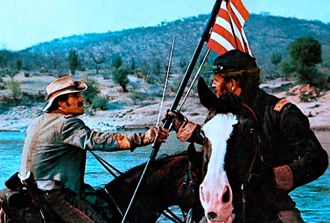 The restored “Dundee” — which had a brief pre-DVD theatrical run last spring — delivers no miracle such as the resurrection of Sam Fuller’s “The Big Red One.” Forget the marketing: This is no “authentic American classic, at last presented as its legendary director intended.” Not even the Peckinpah hardcore consider this is a case of a missing masterpiece.
The restored “Dundee” — which had a brief pre-DVD theatrical run last spring — delivers no miracle such as the resurrection of Sam Fuller’s “The Big Red One.” Forget the marketing: This is no “authentic American classic, at last presented as its legendary director intended.” Not even the Peckinpah hardcore consider this is a case of a missing masterpiece.
Only 12 minutes have been returned to the movie. The rediscovered footage certainly helps, but can’t cure the wheezy plot. We’ll never see a director’s cut — it only existed only briefly, if at all, in the version Peckinpah turned in to Columbia. A good half hour of that cut remains at large.
So why watch? “It’s a flawed film, but an extraordinary flawed film,” says David Weddle, one of three Peckinpah biographers who partner up for the DVD commentary.
Without “Dundee,” the commentators say, there would have been no “The Wild Bunch”: Peckinpah learned from his many mistakes on his first big Hollywood film and delivered the goods when he returned from industry exile in the late ’60s. Plus, they say, the cautionary tale about military adventurism is eerily relevant again with the war in Iraq.
Sony has released “Major Dundee: The Extended Version” on one disc (retail $19.94). The movie comes with two scores: the original that Peckinpah loathed and a new one created for the restoration. A 22-minute excerpt from the 2005 documentary “Passion and Poetry: The Ballad of Sam Peckinpah” rounds up some of the shoot’s veterans, including the late James Coburn.
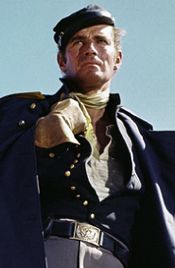 The DVD extras boast a deleted knife-fight scene and some rough silent outtakes, as well as a vintage promo film about the stuntmen (in color and b&w versions). Trailers for the original and restored film provide interesting contrasts. There’s also part of an exhibitors promo reel.
The DVD extras boast a deleted knife-fight scene and some rough silent outtakes, as well as a vintage promo film about the stuntmen (in color and b&w versions). Trailers for the original and restored film provide interesting contrasts. There’s also part of an exhibitors promo reel.
Detailed liner notes by DVD critic Glenn Erickson cover the restoration, which was overseen by Sony Pictures’ Grover Crisp. The notes also mitigate some of the packaging copy’s blatant errors.
“Dundee” stars Charlton Heston in what critics of the time called his best performance (despite the Oscar for 1959’s “Ben-Hur”). Heston plays Dundee, a disgraced and disgruntled Union officer running a New Mexico stockade filled with Confederate soldiers and miscellaneous lowlifes.
Dundee sees opportunity in misery when a nearby ranch is torched by a band of outlaw Apaches led by the creepy Sierra Charriba. The Indians massacre settlers and soldiers, fleeing into Mexico with a few kids as hostages.
Dundee bullies together a sad sack posse made up of green troops, freed slaves, a few criminals and a pack of ornery Southerners led by a dashing Confederate captain (Richard Harris). The oddfellows ride south in pursuit of the Apaches. The kids are rescued, but Dundee soldiers on, his foolish and selfish quest for redemption proving more deadly than the Apaches’ terrorism.
Peckinpah, fresh off the highbrow success of “Ride the High Country,” his second film, convinced Columbia Pictures to let him shoot the $4.5 million adventure on far-flung locations in Mexico. Alarmed studio bottom-liners quickly slashed a third of the budget. In another blow, Peckinpah’s writer delivered a massive, unworkable script. The volatile director headed south, declaring war on the studio and his producer. The party was on.
Coburn, who played a one-armed guide, recalled Peckinpah as “a working alcoholic.” “He was a genius for three hours a day,” Coburn said. The director wed one of his Mexican actresses, half his age. “The (drunken) fights started every night at 11,” one actor recalls. During working hours, Heston went after the infuriating Peckinpah with a saber.
“Soon the studio discovered that Sam was a madman. And in a certain way he was,” says the German actress Senta Berger, whom Columbia forced into the film as eye candy and a European boxoffice draw.
When the studio first tried to fire Peckinpah, Heston offered to surrender his salary to pay for overages, a bluff the studio called. Heston was a crowd favorite on location, unlike his co-star. “Nobody could get along with Richard Harris,” Berger recalls. Others in the ace cast included Warren Oates, Slim Pickens and Jim Hutton.
Peckinpah finally lost control of the film as it staggered into postproduction. Producer Jerry Bresler (“Gidget”) edited the footage to his liking, removing much of the graphic violence he and Peckinpah argued over. The studio then cut Bresler’s cut, and so “Dundee” hit the theaters in shreds. (The restored film is essentially Bresler’s version.)
“They ruined his goddamn picture,” recalls R.G. Armstrong, who played a tough-guy preacher. “How dare (they) do that!”
The commentators take turns trashing the film, but get excited about many of the sequences.
Theatrical audiences of 1965 were greeted with a bit of unintentional black comedy in the title sequence: Mitch Miller’s Sing Along Gang cheerfully urged audiences to “fall in with the major” as Peckinpah’s cameras swept over the gruesome aftermath of the ranch massacre. (The gang was en route to “F Troop,” apparently.) DVD audiences should witness that farce before switching over to Christopher Caliendo’s modern score for orchestra and mariachi band. (The 1965 score was one of the last by the prolific Daniele Amfitheatrof.)
Aside from the muddy day-for-night scenes, “Dundee” looks outstanding, the result of another superb Sony restoration. The David Lean-inspired 2.35:1 compositions of men and horses moving across vast Mexican landscapes were highlights of last spring’s big-screen revival; they remain impressive on DVD. The 5.1 audio is right in step with Caliendo’s foreboding music.
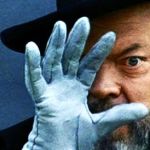
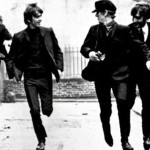
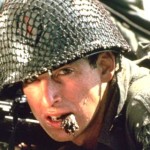
Leave a Reply